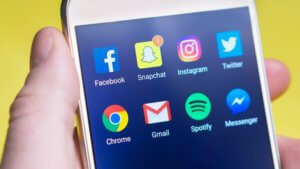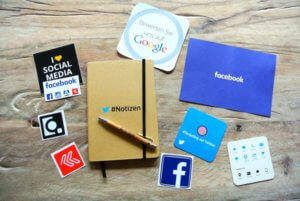This Just In: The Evolution of Social Media as a Public Relations Tool
Published on October 13, 2017, at 11:23 a.m.
by Lexi McKenzie.
What once was known as a platform to keep in touch with friends and facilitate communication has transformed into something completely revolutionary and necessary in the public relations industry.
What it was
Social media began as a method for people to connect and to share thoughts, photos and videos. Though it still serves this purpose, it has expanded to become a powerful resource for public relations practitioners to use in the industry.
The goal of a PR professional is to create and maintain relationships with brands and influencers, and what better way to do this than with social media?
What it became
A company can display its persona through carefully crafted content and messaging on its platforms. It can also engage with its audiences by answering questions and trying to assuage concerns.
Social media changed from an optional marketing tool used by some companies to an essential staple in being on your target audience’s map. The first thing people will do now when they hear of a company is to check out its online presence and what other people have to say about the company on social media.
What I learned
This summer, I interned with a boutique public relations agency where, among other things, we were tasked with creating social media content for our clients. I learned the importance of creating a strategy before you create content. If you don’t have a goal in mind, your content won’t have a common theme and isn’t going to be as impactful as you want (and your client expects).
I had no idea that “content calendars” existed prior to my internship. But, after completing the job, I now understand that they are essential to a social media campaign. Content calendars allow public relations professionals to have all the messaging previously created in one place so as to ensure new content aligns with the company’s brand.
Social media calendars also allow for content to be planned by the day, time and platform, which limits the room for mistakes. PR practitioners can research optimal times to post content on each platform and plan to do so at the best time to receive the most exposure.
What it means
Social media, as it is today, has paved a way for PR professionals to disseminate messages without worrying about pitching to the media. At the same time, practitioners can connect with media and bloggers when they are actively looking for news and products instead of sending endless waves of pitches and hoping something sticks.
Companies now have the opportunity to speak directly to their publics; however, if not used carefully, social media can affect the credibility of messages because the information is obviously coming from the company itself and not a news source.
The evolution of social media has opened new doors for PR practitioners and provided new tools to aid the relationships between brands and publics. Also, since social media is mostly free, good public relations is no longer reserved for big companies with extensive resources and is now attainable for smaller businesses.






